Call Center Report Types and Their Practical Benefits
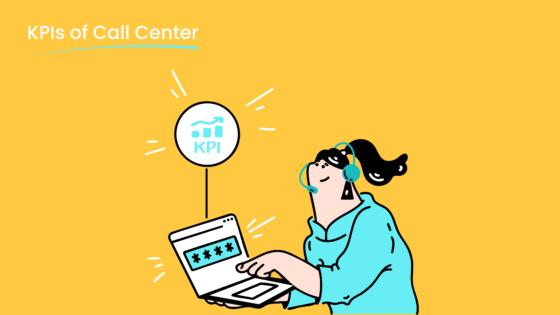
A call center report serves as a vital tool for monitoring and improving customer service. It provides actionable insights into key metrics like call volume, average handling time, and customer satisfaction. For instance, over 50% of customers abandon a company after one bad service experience, underscoring the need for effective call center reporting. Tools like Sobot’s Voice/Call Center help businesses track these metrics in real-time, enabling faster resolutions and better resource allocation. By analyzing data, companies can identify issues, enhance agent performance, and ultimately deliver a superior customer experience.
Real-Time Call Center Reporting

Definition and Importance of Real-Time Reports
Real-time call center reporting provides instant insights into ongoing operations. It captures and analyzes data from every customer interaction, enabling you to monitor performance and make immediate adjustments. This type of reporting is crucial for maintaining service quality and meeting customer expectations. For example, Bouygues Telecom reduced pre- and post-call operations by 30% through real-time monitoring, saving $5 million annually. By focusing on instantaneous data analysis, you can identify customer pain points, optimize workflows, and improve overall efficiency.

Real-time analytics also empower businesses to understand customer journeys and preferences. With tools like Sobot’s Voice/Call Center, you can leverage real-time dashboards to track call volumes, arrival rates, and agent availability. These insights help you maintain service levels and deliver a seamless customer experience.
Key Metrics in Real-Time Call Center Analytics
Understanding key metrics is essential for improving operational performance. Metrics such as Average Handle Time (AHT), First Call Resolution (FCR), and Customer Satisfaction Score (CSAT) provide actionable insights into your call center’s efficiency.
Real-time dashboards offer immediate visibility into call volumes and arrival rates, allowing managers to monitor performance and make quick adjustments.
Here are some critical metrics to track:
- Average Handle Time (AHT): Measures the average duration of calls, impacting efficiency.
- First Call Resolution (FCR): Tracks the percentage of issues resolved on the first interaction, boosting customer satisfaction.
- Customer Satisfaction Score (CSAT): Reflects customer sentiment and service quality.
- Service Level: Assesses the percentage of calls answered within a specific timeframe.
- Call Abandonment Rate: Indicates the percentage of calls abandoned before being answered.
- Cost Per Call (CPC): Evaluates cost efficiency in handling calls.
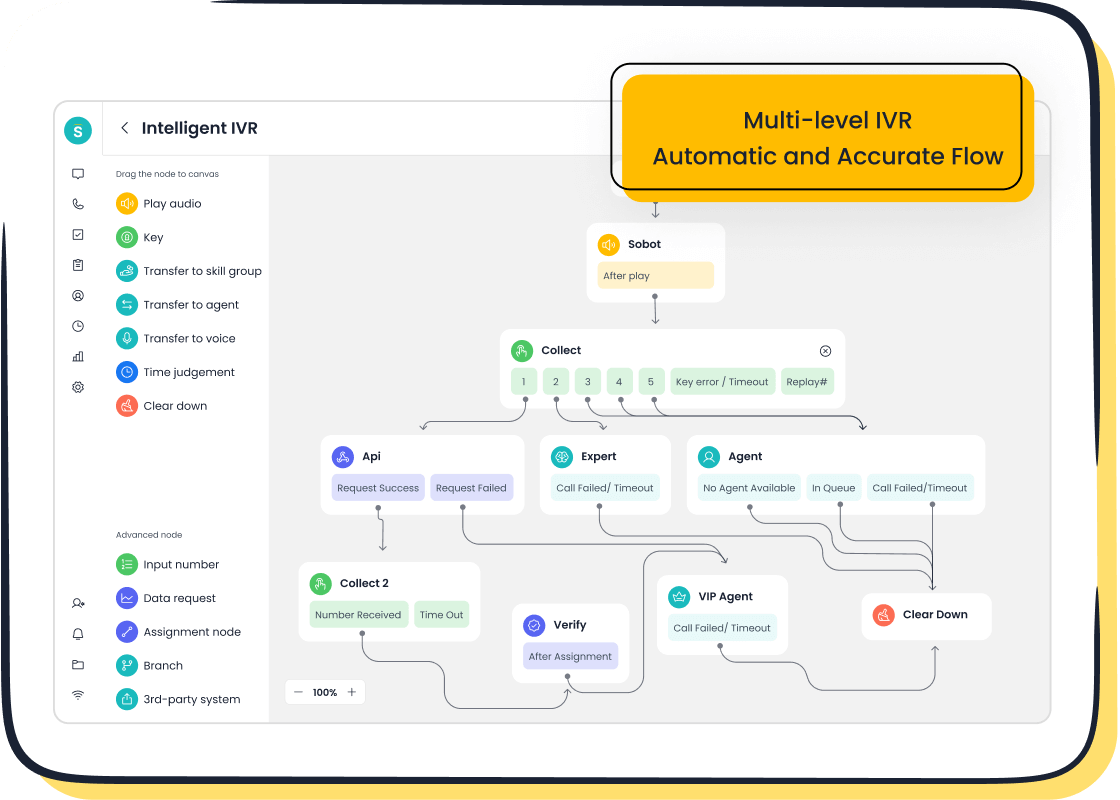
Sobot’s Voice/Call Center integrates these metrics into its analytics platform, helping you optimize operations and enhance customer satisfaction.
Applications of Real-Time Reports in Sobot's Voice/Call Center
Sobot’s Voice/Call Center uses real-time reporting to transform call center operations. Its intelligent IVR system routes calls efficiently, reducing wait times and improving customer satisfaction. The unified workspace consolidates customer data, enabling agents to resolve issues faster.
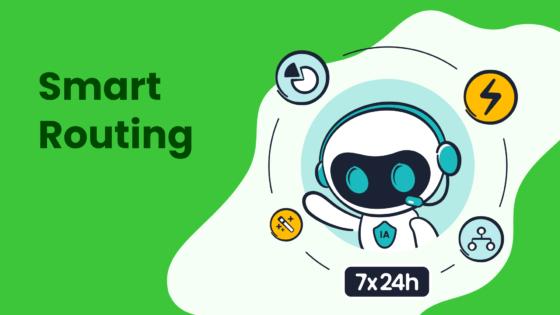
Real-time analytics in Sobot’s platform allow you to monitor call traffic, agent performance, and customer sentiment. For instance, predictive analytics can forecast call volumes, helping you allocate resources effectively. By analyzing data in real time, you can reduce average handle time by up to 40%, as demonstrated in industry studies.
Sobot’s solutions also enhance decision-making. With features like smart call routing and AI-powered voicebots, you can anticipate customer needs and deliver personalized experiences. These capabilities ensure your call center operates at peak efficiency while maintaining high service levels.
Agent Performance Call Center Reports
Purpose of Agent Performance Reports
Agent performance reports are essential for evaluating and improving the efficiency of your call center agents. These reports provide a clear picture of how well agents meet key performance indicators (KPIs) such as customer satisfaction, first contact resolution, and average handling time. By analyzing these metrics, you can identify strengths and areas for improvement, enabling targeted coaching and training.
Effective agent reporting fosters accountability and transparency. For example:
- Scorecards with metrics like customer satisfaction and contacts handled per month help agents understand their performance.
- Agents with balanced scores above 60% often rank in the top quartile for productivity.
- Regular coaching based on these insights enhances both individual and team performance.
High agent satisfaction also reduces turnover rates. Engaged employees are 8.5 times more likely to stay, saving your business the $12,000 average cost of replacing an agent.
Common Call Center Metrics for Evaluating Agent Productivity
Tracking the right call center metrics ensures you can measure agent productivity effectively. Here are some key metrics to monitor:
| Metric | Definition | Industry Benchmark |
|---|---|---|
| Average Handling Time (AHT) | Total time spent on a customer interaction, including after-call work. | Lower AHT indicates higher productivity. |
| Agent Utilization Rate | Proportion of available time used effectively on work-related tasks. | Average is 48%. |
| Average Speed of Answer (ASA) | Time taken for calls to be answered by a live agent. | Average is 28 seconds. |
For example, AHT measures the total time an agent spends on a customer interaction, including hold and transfer times. A lower AHT reflects higher efficiency. Similarly, the agent utilization rate evaluates how effectively agents use their available time, with an industry benchmark of 48%.
How Sobot's Voice/Call Center Enhances Agent Performance

Sobot’s Voice/Call Center empowers you to optimize agent performance through advanced analytics and AI-driven tools. The platform provides real-time agent performance metrics, enabling you to track KPIs like first contact resolution and agent utilization rate.
With Sobot, you can implement data-driven coaching programs that improve agent performance scores by up to 25%. The intelligent IVR system reduces average handling time, while AI-powered voicebots assist agents in resolving complex queries. These features enhance operational efficiency and ensure agents focus on delivering exceptional customer experiences.
Sobot’s unified workspace also consolidates customer data, allowing agents to access relevant information quickly. This reduces response times and improves customer satisfaction. By leveraging Sobot’s solutions, you can create a productive, engaged workforce that drives your call center’s success.
Customer Satisfaction Call Center Reports
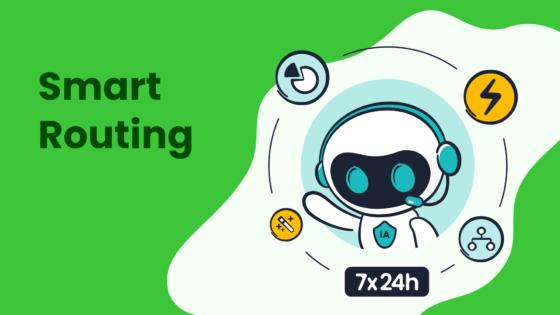
Understanding Customer Satisfaction Reports
Customer satisfaction reports are essential for evaluating how well your call center meets customer expectations. These reports analyze customer feedback and measure satisfaction levels after interactions. They provide insights into what customers value most and where improvements are needed. For example, 95% of contact center professionals consider customer satisfaction the most critical metric for success.
By using these reports, you can identify patterns in customer behavior and preferences. This helps you tailor your services to meet their needs. Sobot’s Voice/Call Center integrates customer satisfaction reporting into its platform, offering enhanced customer insights. With tools like post-call surveys and real-time analytics, you can track satisfaction levels and act on feedback promptly.
Metrics Used to Measure Customer Satisfaction
Tracking the right call center metrics is vital for understanding customer satisfaction. Here are some key metrics:
| Metric | Description |
|---|---|
| Customer Satisfaction Score (CSAT) | Measures customer happiness with individual interactions, typically through post-interaction surveys. |
| Net Promoter Score (NPS) | Gauges customer loyalty and likelihood to recommend, based on a single question about recommendations. |
| First Call Resolution (FCR) | Measures the percentage of issues resolved on the first contact, indicating operational efficiency. |
For instance, a good FCR rate ranges between 70% and 75%, while top-performing call centers achieve 80%. Sobot’s platform helps you monitor these metrics in real time, ensuring you maintain high service standards.
Practical Applications for Enhancing Customer Experience with Sobot
Sobot’s Voice/Call Center empowers you to enhance customer experience through actionable insights. The platform’s analytics tools allow you to identify trends and address pain points quickly. For example, Sobot’s solutions have helped businesses achieve a 97% customer satisfaction rate and improve agent efficiency by 30%.
The system also enables you to act on customer feedback effectively. By leveraging AI-powered tools, you can personalize interactions and improve service quality. Features like intelligent IVR and unified workspaces streamline operations, ensuring faster resolutions. These capabilities not only boost customer satisfaction but also strengthen loyalty and retention.
Operational Efficiency Call Center Analytics
What Are Operational Efficiency Reports?
Operational efficiency reports focus on evaluating how effectively your call center utilizes its resources to deliver quality service. These reports analyze key call center metrics to identify inefficiencies and areas for improvement. For example, agents spend an average of 14% of their time searching for information, equating to over an hour daily in an 8-hour shift. By addressing such inefficiencies, you can enhance productivity and reduce costs.
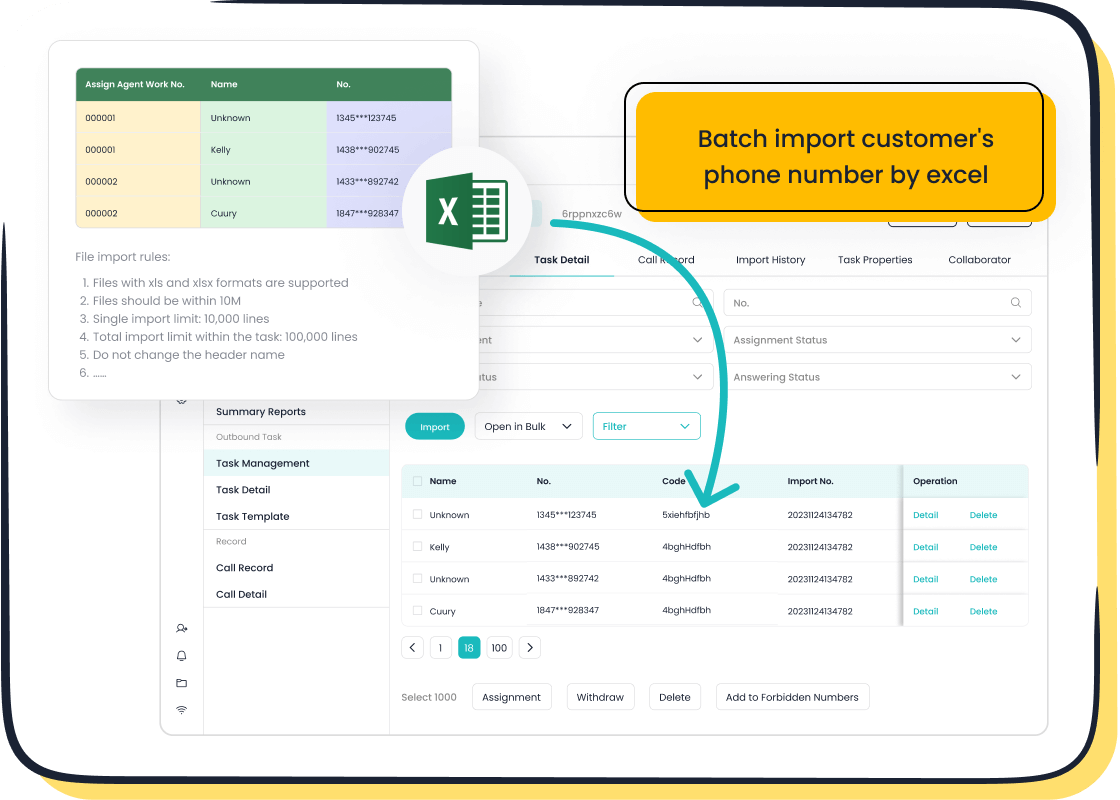
These reports also provide insights into resource allocation, agent performance, and customer satisfaction. With tools like Sobot’s Voice/Call Center, you can generate operational efficiency reports that highlight bottlenecks and recommend actionable solutions. This ensures your call center operates at peak efficiency while maintaining high service standards.
Key Metrics for Measuring Efficiency in Call Centers
Tracking the right metrics is essential for improving operational efficiency. Here are some critical metrics to monitor:
| Metric | Description |
|---|---|
| Average Handle Time (AHT) | Measures the average duration taken to resolve a customer call. |
| First Call Resolution (FCR) | Indicates the percentage of calls resolved on the first contact without follow-ups. |
| Occupancy Rate | Reflects the proportion of time agents spend handling calls versus being idle. |
| Service Level (SLA) | Defines the percentage of calls answered within a specified time frame. |
| Customer Satisfaction Score (CSAT) | Gauges customer satisfaction with the service received during the call. |
| Cost Per Call | Calculates the total cost incurred for each call handled by the center. |
| Agent Utilization Rate | Measures the efficiency of agents in handling calls relative to their available time. |
| Average Speed of Answer (ASA) | Indicates the average time taken to answer incoming calls. |
| Agent Absenteeism Rate | Tracks the rate at which agents are absent from work, impacting overall performance. |
| Net Promoter Score (NPS) | Assesses customer loyalty by measuring their likelihood to recommend the service to others. |
These metrics provide a comprehensive view of your call center’s performance, helping you identify areas for improvement and optimize operations.
How Sobot's Solutions Optimize Call Center Processes
Sobot’s Voice/Call Center leverages real-time analytics and advanced tools to enhance operational efficiency. The platform’s intelligent IVR system reduces average handle time by routing calls to the right agents. Features like unified workspaces and AI-powered voicebots streamline workflows, enabling agents to focus on resolving customer issues.
Real-time analytics in Sobot’s platform allow you to monitor call traffic, agent performance, and customer satisfaction. For example, predictive analytics can forecast call volumes, helping you allocate resources effectively. By addressing inefficiencies, you can improve agent utilization rates and reduce costs.
Sobot’s solutions also provide actionable insights through operational efficiency reports. These reports highlight key metrics like service level and first call resolution, enabling you to make data-driven decisions. With Sobot, you can achieve a more productive call center while delivering exceptional customer experiences.
Call Volume and Traffic Reports in Call Center Analytics
Overview of Call Volume and Traffic Reports
Call volume and traffic reports provide essential insights into the number of calls your call center handles daily, weekly, or monthly. These reports help you understand patterns in customer demand and identify peak times when resources are stretched. For example, the average call center manages approximately 4,400 calls per month, equating to about 144 calls daily. A sustained 10% increase in call volume can create operational challenges, impacting customer satisfaction and agent performance.
Managing call traffic effectively is crucial for maintaining service quality. Poor customer service costs U.S. businesses $1.6 trillion annually, emphasizing the importance of these reports. By analyzing call volume trends, you can allocate resources efficiently and reduce customer churn. Tools like Sobot’s Voice/Call Center offer real-time analytics to monitor call traffic, ensuring your team is prepared for fluctuations in demand.
Metrics for Monitoring Call Traffic
Tracking the right metrics helps you manage call traffic effectively. These indicators provide actionable insights into customer behavior and operational efficiency.
| Metric | Description |
|---|---|
| CSAT Score | Measures customer satisfaction through surveys, aiming for an average of 75%. |
| Lead Conversion Rate | Tracks the percentage of leads converted into customers, reflecting sales effectiveness. |
| Peak Hour Traffic | Identifies the busiest times for calls, aiding in workforce allocation. |
| Customer Retention Rate | Represents the proportion of customers retained over time, indicating service quality. |
| Customer Churn Rate | Measures the percentage of customers who stop using the service, highlighting retention challenges. |
| Adherence to Schedule | Assesses how well agents stick to their schedules, ensuring availability during peak hours. |
Sobot’s Voice/Call Center integrates these metrics into its analytics platform, enabling you to monitor call traffic and optimize resource allocation. For example, tracking peak hour traffic allows you to schedule agents strategically, reducing wait times and improving customer satisfaction.
Applications for Resource Allocation and Planning with Sobot's Voice/Call Center
Call volume data plays a critical role in resource allocation and planning. By reviewing historical trends, you can forecast call volumes and adjust staffing levels accordingly. Proper scheduling ensures agents are available during peak hours, minimizing customer wait times.
| Evidence Description | Key Insight |
|---|---|
| Monitoring KPIs and analyzing trends are essential for effective management. | Data-driven decisions can optimize performance and improve customer service. |
| Proper scheduling includes balancing peak hours and agent availability. | Effective scheduling helps manage call volume and reduces wait times. |
| Reviewing staffing and forecasting call volumes based on past data is crucial. | Understanding demands through historical data aids in maintaining manageable workloads. |
Sobot’s Voice/Call Center simplifies this process with real-time analytics and predictive tools. The platform’s intelligent IVR system routes calls efficiently, reducing bottlenecks during high-traffic periods. Features like unified workspaces and AI-powered voicebots streamline operations, ensuring agents focus on resolving customer issues. By leveraging Sobot’s solutions, you can maintain service levels and deliver exceptional customer experiences, even during peak times.
Call center reporting offers transformative benefits for businesses. It enhances the customer experience by identifying pain points and enabling faster resolutions. By tracking agent performance and operational efficiency, you can optimize workflows and allocate resources effectively. For example, long-term trend tracking reveals seasonal peaks, while predictive analytics improve staffing strategies.
| Evidence Type | Description |
|---|---|
| Trend Tracking | Long-term tracking of call volume trends helps identify seasonal peaks and troughs, aiding in resource allocation. |
| Historical Data Analysis | Analyzing historical data over weeks or months reveals patterns that inform strategic planning. |
| Predictive Analytics | Utilizing historical data to forecast future call volumes and staffing needs enhances operational efficiency. |
Sobot’s solutions amplify these benefits. Businesses using Sobot have achieved a 97% customer satisfaction score and reduced inbound discussion volume by 20%. The platform’s AI tools resolve 22.2% of queries through self-service, improving efficiency and customer feedback.
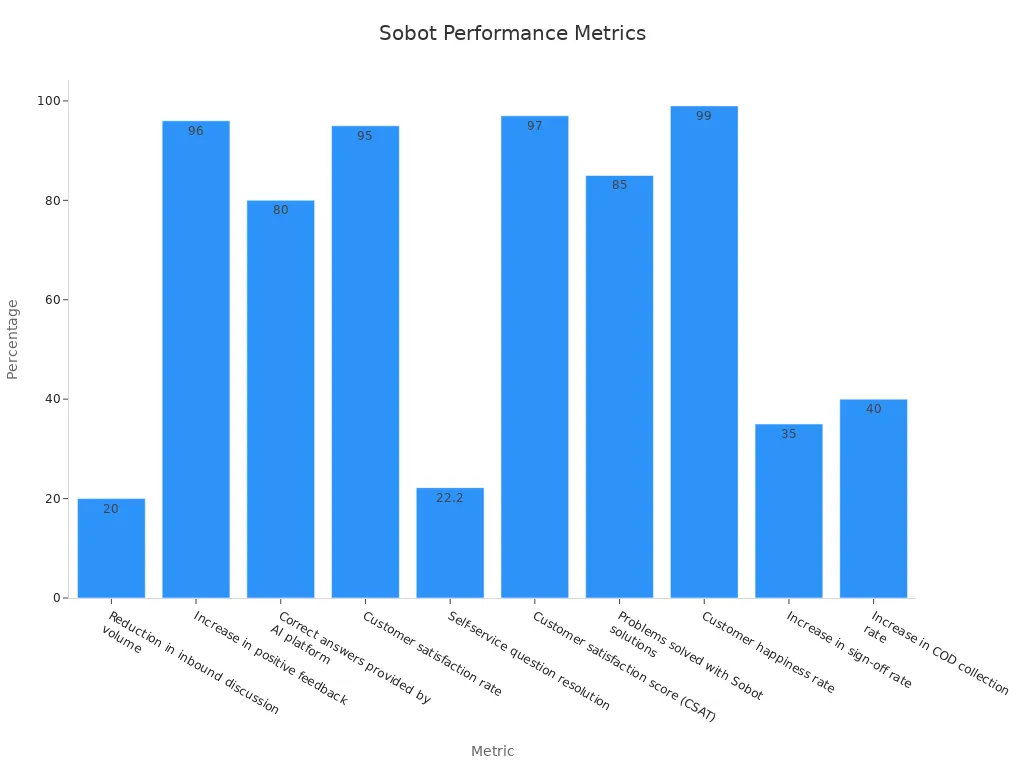
By leveraging Sobot’s advanced analytics and AI-driven tools, you can make data-driven decisions that drive long-term success. These solutions ensure your call center operates efficiently while delivering exceptional customer experiences.
FAQ
What are call center reports, and why are they important?
Call center reports analyze data from customer interactions to measure performance and efficiency. They help you track metrics like call volume, agent productivity, and customer satisfaction. Tools like Sobot’s Voice/Call Center provide real-time insights, enabling better decision-making and improved customer experiences.
How can real-time call center reporting improve customer satisfaction?
Real-time reporting identifies issues instantly, allowing you to resolve them quickly. Metrics like First Call Resolution (FCR) and Average Handle Time (AHT) help you optimize workflows. Sobot’s analytics tools enhance service quality by reducing wait times and improving resolution rates.
What metrics should you track in agent performance reports?
Key metrics include Average Handling Time (AHT), Agent Utilization Rate, and First Contact Resolution (FCR). These metrics measure efficiency and productivity. Sobot’s Voice/Call Center tracks these metrics in real time, helping you coach agents and improve their performance.
How does Sobot’s Voice/Call Center optimize operational efficiency?
Sobot’s platform uses intelligent IVR and AI-powered voicebots to streamline workflows. Features like unified workspaces and predictive analytics reduce inefficiencies. Businesses using Sobot have reported a 30% increase in productivity and a 20% reduction in operational costs.
Can call volume reports help with resource planning?
Yes, call volume reports highlight peak traffic times and seasonal trends. This data helps you allocate resources effectively. Sobot’s Voice/Call Center uses predictive analytics to forecast call volumes, ensuring agents are available when demand is highest.
See Also
Essential Strategies for Effective Call Center Quality Management
Key Features to Look for in CRM Call Center Software
Understanding Medical Call Center Services and Their Advantages
Best Call Center Analytics Software Options for 2024
Enhancing Call Center Efficiency Through Effective Monitoring